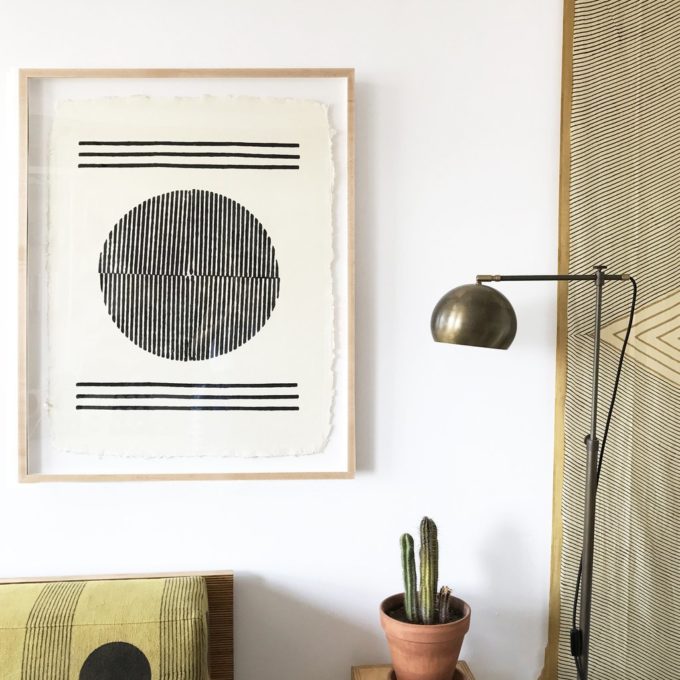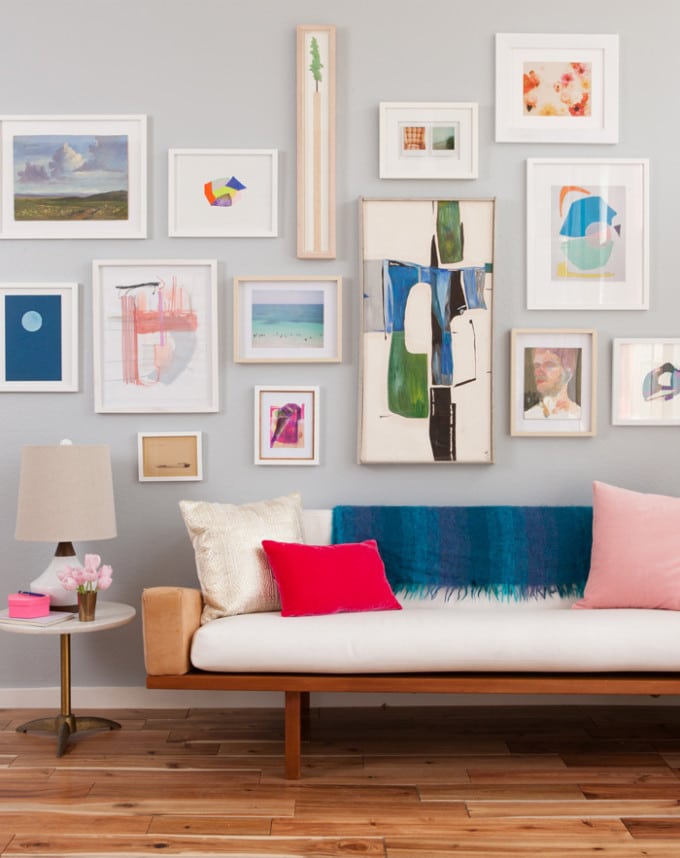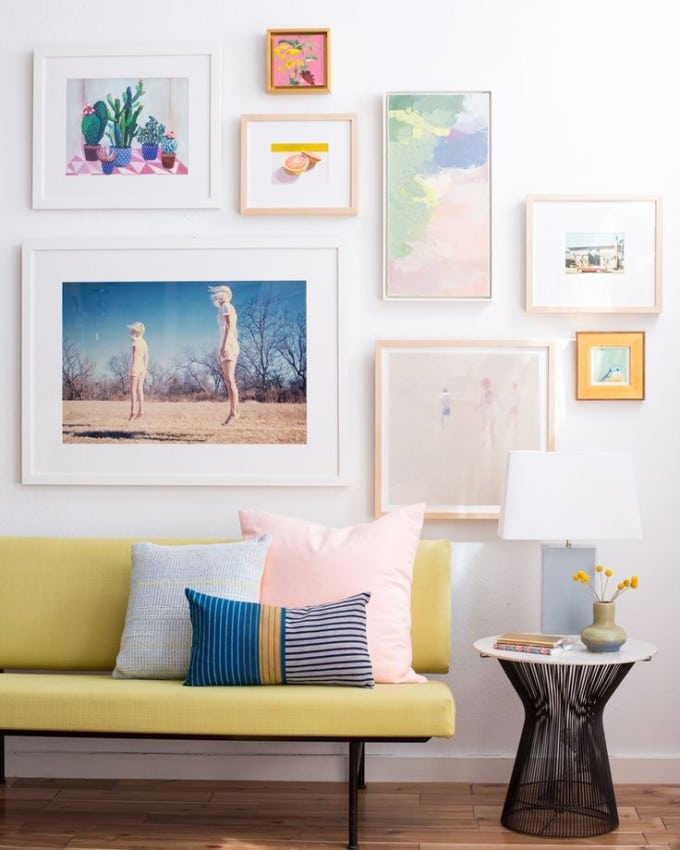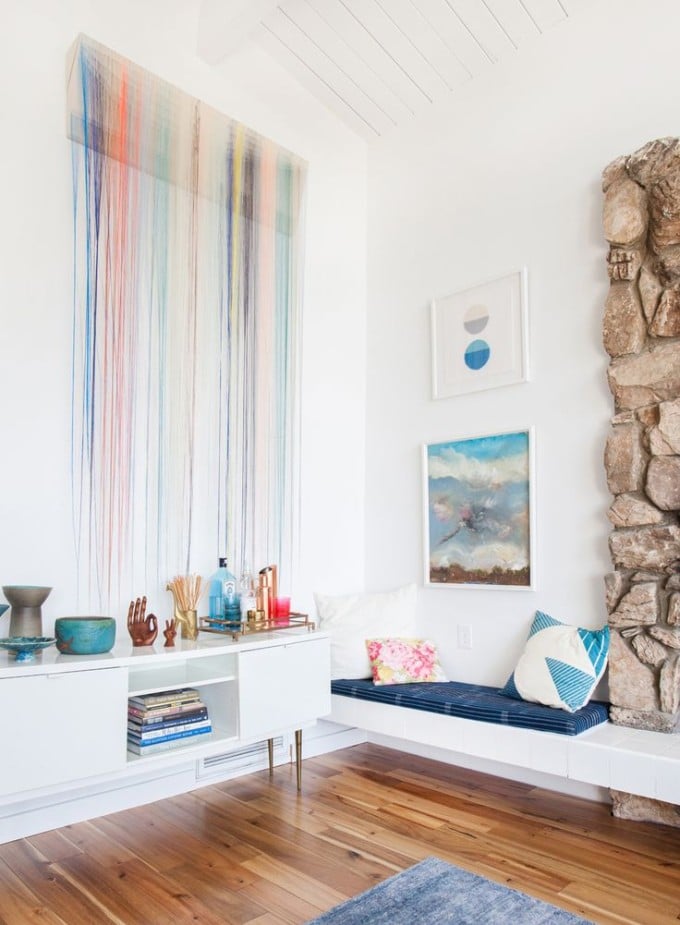
- Choose a color story (such as bright and airy or dark and moody) and purchase art within that overall palette.
- Blend different styles.You don’t want allabstract paintings or all graphic photos. If you’re shopping online, try plugging in search terms like “watercolor,” “abstract,” “original,” “graphic,” “bright,” “modern,” etc. Something three dimensional (like a collage or paper sculpture) is always a nice addition, too.

- Combine a mix of sizes.You need a few bigger pieces to ground it, as well as a few smaller pieces to help round it out. Make sure you have vertical, horizontal and square. And the more strange-sized the better; sometimes when you have a whole wall of standard sizes, your eye can just tell, so throw in a few odd sizes.
- Art should be hung at “eye level,”except if your ceilings are really low or if you’re really tall. Typically, art should be centered around 57 inches from the floor.

- I like art to be about eight inches above a piece of furniture, give or take. You don’t want it to hit your head.
- For a gallery wall, treat the whole collection as one piece, and start and stop it where it makes the most sense. You also don’t want your art to be too small for the space, which is a common mistake.

- Start with the biggest piece and put it off-center. Then build around it. Keep at least three inches between each piece, and make sure to pepper art evenly. For example, don’t put two really dark pieces next to each other OR really light pieces next to each other. Don’t keep all the paintings in one corner and all the photography in the other.
- Here’s a good trick I do ALL THE TIME:Put up the piece of art, then stand back and take a photo. Pretend it’s not your house and that you have no emotional connection to it. Look at that photo and ask yourself, “If I saw this picture in a magazine, would I think that art is too low or too high?”
Source: cupofjo
